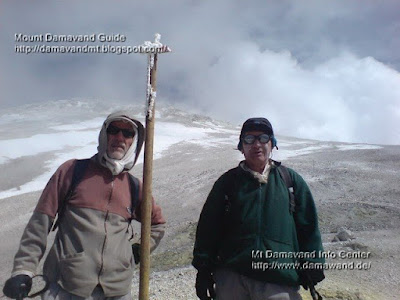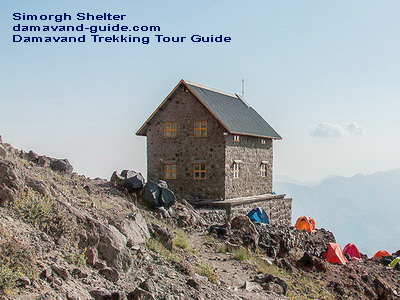Since Damavand is a conical volcano, there are four well-known hiking routes and numerous angles from which it can be climbed. Damavand Peak, which is frequently surrounded by clouds, is significant in Persian mythology and folklore. More than one of the nation's incredible natural wonders can be found in Damavand. In a clear sky, Tehran and as far as 250 kilometres away can both see the Damavand top. Another name for this enormous volcano in perfect cone shape is Damavand Volcano. It is situated on the southern shore of the Caspian Sea in the northern part of Iran, in the centre of the Alborz Mountain Range. The height of Damavand Mountain is 5670 meters above sea level (See also Damavand Height by our GPS Measurement). The Damavand Volcano is the second-highest volcano in the northern hemisphere and the tallest volcano in Asia.
• Elevation Gain: 2670 meters (8760 feet).
• Best starting day: The best days to start are Saturday and Sunday. Visit
Damavand Crowd.
• Best starting
Damavand Campsites: Polour Campsite is the ideal starting point for the south and west routes. For the north and northeast routes, Nandal Camp.
• Climbing Season: All year long for seasoned climbers. From mid-June to mid-September is the best time for average climbers.
• Easiest Hiking Path: In the summer, the southern path is a good place to go hiking and trekking.
• Moderate Trekking Route: The west path is an easy trek with a gradual ascent and a difficult descent.
• Longest Mountaineering Route: The longest mountaineering path is on the northeast side, along the Gazaneh trail.
• Hardest Climbing Route: The North Face is the most difficult scrambling climb.
• Hiking Distance: The base camp of the Goosfand-Sara South Way is about 8 kilometres from the summit (about 10 hours).
The conventional south path is the most well-liked route.
• Climbing Guide: The
Damavand Guide Team is the most knowledgeable guiding team for trekking tours in Damavand.

Information and Facts for Trekking Tour Damavand
It depends on the weather and snowfall.
• Snow availability and ski season: December to mid-May. Skiing is most enjoyable in March and April.
• Snow Depths: 2 to 5 meters of snow cover
• Vertical Ski Drop: A maximum of 3000 meters can be skied vertically from the summit to the asphalt road.
• Total Skiable Distance: Peak to asphalt road distance is best around 12000 meters for total skiable distance.
• Ski Guide: The
Damavand ski guide team is the most knowledgeable guiding team for ski touring and ski climbing.
 Facts about Iran's Mount Damavand
Facts about Iran's Mount Damavand
Facts about Iran's Mount Damavand in Brief
• Height: 5,670 m (18,600 feet) (see my GPS measurement).
• Location: Mazandaran Province, Iran.
• Prominence: : 4,667 m. It is recognized as the world's 12th most prominent summit.
• Routes: There are four major
Damavand trekking routes: the north route, the west front, the south route and the north-east side
•
Volcanic activity: It currently possesses thermal springs at the base and releases sulfuric gas from its summit.
• Peak location: Latitude and longitude coordinates, Lat: 35.954466°, Lon: 52.110020°.
• Nearest airports: IKA Airport and Mehrabad Airport.
• Last eruption: Around 5,300 BC was the last eruption.
• Symbolism: Damavand Mountain represents Iranian resistance to foreign occupation in Persian poetry and literature.
• Rank: The Damavand volcano is the third-highest of the volcanic seven summits (V7S). It is also the tallest mountain in Iran and the middle-east, the second-highest mountain in the northern hemisphere, and the tallest volcano in Asia. In terms of prominence,
Damavand Mountain is the world's 12th-highest summit.
Damavand Facts 23MDG0319A












